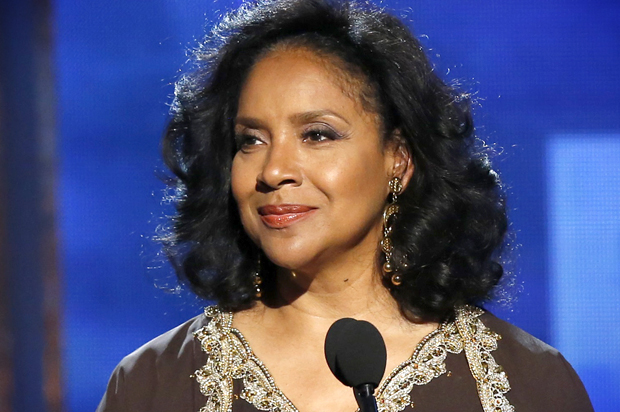
Opinion by Dr. Alton C. Strange
One of the things that sets our public education system apart from the rest of the world is the belief in education being the “great equalizer.” The ability of any individual, regardless of their circumstance, can attain the American Dreamthrough education. While this belief has not always been implemented throughout our history, there are individuals that have overcome obstacles and their circumstances through education to become productive citizens and trailblazers.
With the historic election of President Obama, the idea that anyone can grow up to be President has become true again. Unfortunately, there are some educators in Virginia and Floridawho have adopted achievement standards that are based on race and ethnicity.Several weeks ago, the Boards of Education in Virginia and Florida adopted race-based standards for students attending public schools.
These standards mandate that by 2018:
1) 90% of Asian students, 88% white students, 81% if Hispanic students & 74% of “black” students are to be reading at or above grade level. 2), 86% of white students, 92% of Asian students, 80% of Hispanic students and 74% of black students are to be at or above their grade level in math.
Surprisingly, these standards were adopted with virtually little national attention or public outrage.
There are several questions that need to be asked. The first question is why would educators who are supposed to believe all children have the ability to learn, develop racially based standards that expect less of certain students? Additionally, why would these educators make the “black” students perform substantially less than Asian and white students? Are their reasons due to personal bias or misguided beliefs in racial stereotypes?
The second question is what did educators plan to accomplish by developing racially based standards? Did these educators feel they were helping “black” families and youth by developing a lower standards? Did these educators hope to provide skewed data of the achievement standards by increasing the expectations of Asian and Hispanic students to cover the lower expectations of “black” students? Would these educators attempt to show that minorities are improving or meeting expectations to receive additional state or federal funds? Will the achievement scores of “black” students even be counted?
Third, what message is this policy sending to teachers, students, parents? Will teachers and administrators view this policy as a reason to focus more on the academic achievement of Asians, whites and Hispanic students to the detriment of “black” students? Will “black” students find themselves invisible again? Will the lowered expectation of black students solidify a superior/inferior mentality among “black” and non “black” students? Lastly, what message are parents of “black” students receiving from these new racially based academic standards and what are they prepared to do about it?
Finally, how is this legal? This policy is obviously discriminatory and goes against the constitutional rights of American citizens. Furthermore, these “blacks” are taxpayers who expect their public school system to provide their child with the foundation to obtain the American Dream. There should be no reason for educators to have lower expectations for any child, particularly a child from a specific race or ethnicity.
At time when our country needs all children excelling academically to reclaim our position as leader of the global market, we cannot afford to go back and fight another Civil Rights campaign. What are we going to do to put an end to educational Jim Crowism before it begins to spread?
Dr. Alton C. Strange is an educator and activist who writes the blog Strange Ideas on Education. He holds degrees from the University of Pennsylvania and Morehouse College. Follow him on Twitter @alton_strange.









[…] Blog Separate but equal may have referred to segregated schools but what about testing results? Burton Wire contributor Alton C. Strange writes that in the Southern states of Virginia and Florida, students […]
The percentages are meant to hold teachers accountable based on current numbers of achievement. The teachers are the ones who scream when you hold them accountable for all races equally.
[…] but equal may have referred to segregated schools but what about testing results? Burton Wire contributor Alton C. Strange writes that in the Southern states of Virginia and Florida, students […]
[…] but equal may have referred to segregated schools but what about testing results? Burton Wire contributor Alton C. Strange writes that in the Southern states of Virginia and Florida, students […]
[…] but equal may have referred to segregated schools but what about testing results? Burton Wire contributor Alton C. Strange writes that in the Southern states of Virginia and Florida, students […]
These are important developments we all need to watch carefully, but I think a lot more information is needed than is revealed here. The opinion posted here shows the percentages within each “race” (there are so many problems and complexities with our current terminologies, especially the flexible term “black,” that I can’t write the word “race” without quotation marks) who are expected to achieve in certain measures. Based on the raw numbers, yes, inequality does seem to be exacerbated, condoned, furthered, accepted, etc. But this opinion does not explain how much IMPROVEMENT each of those goal numbers would imply for the targeted group of students. We need to look at the initial performance rates on which these new standards are being based in order to have a more accurate understanding of the policy makers’ intentions. We wish performance inequalities did not exist between different groups of people in this nation — but unfortunately these are real, measurable problems that pre-exist the new policies lamented here. The children in each group are impacted by trending socio-economic factors. It is true that, on average, African American students have a lower average reading level in school. Education assessment uses baseline data to set improvement targets. I would like to know if the new standards include any “next steps” — after African American children are brought up to 74% on grade level by 2018, what is the NEXT goal to continue closing performance gaps among children from all different groups?
(I am an educator on the Florida college system, and I was educated in the Virginia schools)
I’m not sure why there hasn’t been more parents, school board officials in surrounding areas and other educators fighting against this policy or at least making an effort to bring more national attention to it. Standards should be high for all students. When you lower standards it a) makes a student feel like they do not have the ability to achieve high standards and b) it gives other students of different backgrounds the idea that they are smarter or better than others. I hope to see more attention brought to this issue. We need more experts on education submitting arguments for equal standards for all students.
Posts like this misread the intent of the varying standards. The whole point of these standards is to combat unequal educational outcomes. Right now, the disparities between blacks / hispanics and whites / Asians is higher than what exists in the new goal standards (pass rates for blacks and Asians in Virginia’s Standards of Learning in math last year were 52% and 87% , respectively, a 25% gap: the goal rates are 74% and 92%, an 18% gap). The idea is to combat this disparity head on by setting a specific goal to equalize student outcomes by race. Obviously, it’s unrealistic that in just six years, every underperforming ethnic group is going to start doing well on the exams, so the goal standards do still have lower performance standards for blacks and hispanics.
A non-race-based goal standard could be achieved by ignoring blacks and hispanics and upping pass rates for whites and Asians. The whole point of race-based standards is to make sure that that doesn’t happen.
If you want to raise the academic standards, you make the standards equal for ALL students. Why not make the standard percentage 80% across the board, then you won’t need inequitable race based standards. Why not state that you are going to maintain 85% race x, increase race y & z to 85% by 20XX with the goal of reaching 90% for all races by 20XX. That is how you develop equitable standards.
These standards have shown the district has given up and decided to take the path of least resistance by agreeing to expect less of certain children.
I’d like to point out that the notion of education being the “great equalizer” is by no means an American ideal and is not something that sets the U.S. public education system apart from the rest of the world.
This myopic belief that things like freedom for all, the right of the individual to pursue his or her dreams, etc. is a fundamentally AMERICAN concept – and that other developed nations (Canada, Australia, New Zealand, Japan, most of Europe, much of South America) don’t also promote this concept – is something that really irks non-Americans.
The U.S. does not live in a bubble of inclusivity, did not pioneer the notion of the fundamental rights of man, and does not sit alone in a world where everyone else struggles for a sense of equality that is uniquely American. On the contrary, you might find that parts of Europe and Canada are far more advanced in this regard.
I do, however, agree that standards should be equal for all students, and am shocked that educators promote race-based goals.
Comments are closed.